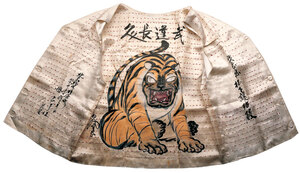I want to go back to one of the articles we read early in the class, Henry Yu's "American Studies in a World of Pacific Migrations." The first heading in the essay says, "Is Anybody in L.A. Actually from Here?" and he then goes on to say that the celebrities that people associate with LA are "fueling an impression that nobody is every actually from Los Angeles" (531). I think this is a really interesting point. People talk about a New York or Boston or Chicago accent but what is a Los Angeles accent? Is it one that hints at English being the second language? The Garcia, Kuramitsu, Yamamoto and I'm guessing the Costanza-Chock (I haven't read it yet but the word "immigrant" is in the title) articles all deal with people who have immigrated to the west coast. I think one of the spectacular things about LA is that it really is such a melting pot. When you drive through the city, there are constantly signs that say "Little Armenia," "Little Tokyo," or "Historic Filipinotown" not to mention the overwhelming amount of road names that are clearly of Spanish origin. This study found in 2008 that over a third of LA County's 9.9 million inhabitants are immigrants. I was surprised to read later in this study that as of 2006, less than half of those immigrants were Mexican (page 18). Los Angeles is known for having a lot of Mexican immigrants, but in reality, it is filled with people from all over the world. I have cousins who were born and raised in LA (yes they're actually from there!) but in all their pictures with their friends, the group is really diverse. I only wish I could have grown up with that kind of diversity (or any diversity for that matter... thank you suburbs).
Here's a screenshot of an NYTimes interactive map on race of Los Angeles:
Here's one of Chicago:
Maybe I'm just seeing what I want to see, but it looks to me like Los Angeles has a lot more overlap of colors and that Chicago's are more blocked out. I'm really happy we studied LA and looked at articles that talk about people with all sorts of heritages. It is encouraging for people like me who grew up with limited daily exposure to different cultures and ideas!





